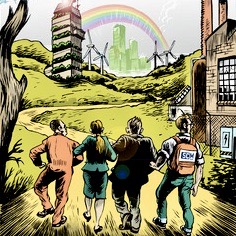Primary transport data is key in reducing carbon footprint

Companies are under increasing pressure to reduce their carbon dioxide emissions, but as much as 60% of those emissions are caused by suppliers and transport partners upstream in the supply chain. So what can you do about upstream emissions? During a recent Webinar Wednesday, Project44 and Tracks explained that structural reductions are only possible if shippers have access to primary data from carriers.
By Marcel te Lindert
Imagine that a 1,000kg pallet is transported from A to B somewhere in your supply chain. All you know is that it is shipped by road. How can you calculate the CO2 emissions? “According to the Global Logistics Emission Council (GLEC) scheme, you have to assume the worst-case scenario: urban transport in a delivery van such as a Mercedes Sprinter that subsequently drives back to the depot empty. That results in carbon emissions of approximately 650 grams per tonne-km,” stated Jakob Muus. “But if you looked into the actual emissions, you might discover that the pallet was transported in a trailer along with 32 other pallets rather than in a van, and that the truck carrying that trailer drove on the motorway and picked up a return load on the way back. In that case, the carbon emissions would be between 52 and 64 grams per tonne-km.”
Standard calculation factors
Jakob Muus is founder and CEO of Tracks, a German start-up offering a tool for calculating carbon emissions in the supply chain. Together with Christian Piller from Project44, a specialist in supply chain visibility, he explained how companies can reduce their carbon footprint. They used the example above to illustrate the importance of gathering as much data as possible about CO2 emissions. Piller: “Most shippers use standard calculation factors for this, such as the average weight per pallet or per container. Then they … … …
Want to read more?
 Download Supply Chain Movement Q2, 2022 for free.
Download Supply Chain Movement Q2, 2022 for free.









